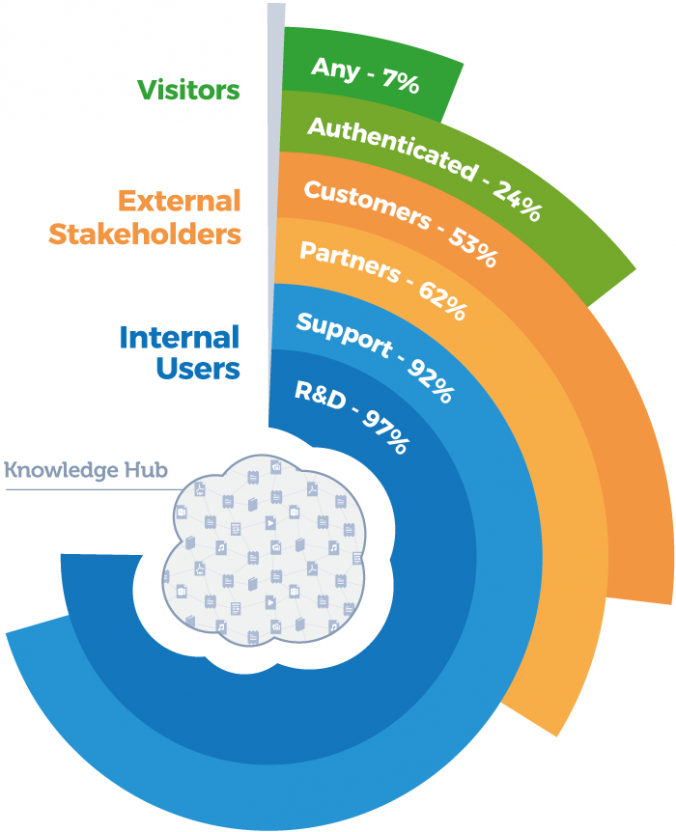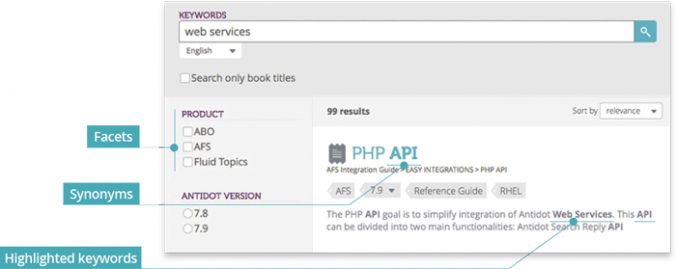Dynamic content publishing delivers personalized, customized, on-demand documentation. It enables evolution from a static scenario—the provider tossing their documentation over a wall to the user—to having a detailed one-on-one conversation with readers. Legacy publishing tools can’t achieve Dynamic Content Delivery, but specialized solutions exist. The following 10 points are meant to help you choose a solution that matches your needs.
1. Multi-source capabilities with extensive content format support
Even though you start with a tactical project dealing with only one type of content, you need to think ahead if you want to be prepared for a variety of use cases and stakeholders. Make sure the dynamic content delivery solution can support multiple and diverse input streams, as you identify all data sources that contain information that could be beneficial to users.
2. Content enrichment capabilities
Not all content is born alike. Therefore, to deliver consistent information, particularly in a multisource environment, you need tools to clean, align, and enrich the content—particularly the metadata. Because building content processing workflows can be complex, make sure that the dynamic content delivery solution you select offers the necessary functions and can be extended.
3. Top-notch search engine
This is the most important aspect of a dynamic delivery solution. Regardless of the money you spend in creating content, if you can’t find it, it doesn’t exist. On the other side, burying users with tons of irrelevant content won’t serve. The search engine has to be:
Semantic: support for grammar and synonyms
Full-text: every bit of every document must be indexed
Tuned, tunable, and versatile: relevance tuning is an art, so it has to be good out of the box, but it must be extensible so that additional parameters can be part of the ranking equation (think about user profile, document popularity, freshness, etc.)
Faceted: filters are automatically extracted from the metadata and can be offered to users for narrowing down their search
Suggestive: with type-ahead suggestions (autocomplete)
Typo-tolerant: the spell checker must be capable of learning
Explicit: each result must show why it’s in the list with keywords and synonyms highlighted
Multilingual: all the above capabilities must be equally good in any language that matters to you
Fast: millisecond-quick, regardless of the traffic
4. Efficient documentation reading
Once the user has found the info, how easy is it to read, to navigate inside the document (particularly large books), to follow internal and external links, to retrace your steps…? Is multimedia content rendered correctly, do large images and vector graphics have zoomability? Can you tune the look and feel of the content to match your branding?
5. Online content interactivity
Bookmarks, Alerts, Rating, Annotations, Feedback, Personal Books… features that allow you users to customize your content are essential. Pick only the ones you need: too many bells and whistles may clutter up your UX. Define what makes sense in your situation and to your users.
6. Multi-device, multi-channel publishing output
Of course, the user interface has to work perfectly on common connected devices (laptops, tablets, smartphones), so it needs a responsive interface. Integration capabilities for other solutions such as customer helpdesk tools are essential. Inline/in-device help, chatbots, or augmented reality are not just buzzwords; they are our tomorrow. So, your Dynamic Delivery platform has to be future-proof, not just by tossing in APIs, but by giving you ready-to-use add-ons and extensions.
7. Open and turnkey publishing solution
You don’t want a bare framework and have to spend months developing something that will need to be revamped anyway in 18 months because everything is evolving so rapidly. Therefore, make sure that the solution you choose is:
Turnkey: it provides you with 90% of your needs in matter of days or weeks. It comes pre-tuned, ready for your brand.
Open: it offers connectors, add-ons, modules, APIs, etc. It can be extended and it talks to other products so that it can be integrated into your IT landscape
Evolving: it has a vision and a roadmap, with the ability to follow the trends and needs. AR, VR, virtual agents, predictive… you’ll be prepared.
8. Data driven documentation
Tracking users’ behavior while searching and reading is a unique opportunity to learn about them, their problems, and your products. But for that, analytics needs to be tailored specifically, not by regular web analytics tools. Check the capabilities of the dynamic content delivery solution, how it tracks and logs, what metrics it provides by default, if it’s extensible, and how the derived insight can enhance your customer support strategy (data visualization, personalization, predictive, etc.).
9. Online documentation security

10. Content publishing regulation compliance
Regulations are putting more and more pressure on every industry. Which ones apply to you? Do you have users in Europe? Then you must comply with GDPR for data privacy. Or with Privacy Shield for US users. What about WCAG for accessibility? The list is not going to get any shorter, so it pays to be prepared.
Want to learn more about Dynamic Content Delivery?
These ten points, and much more information on Dynamic Delivery, are detailed in a white paper Dynamic Delivery: What it is and Why it Matters.






